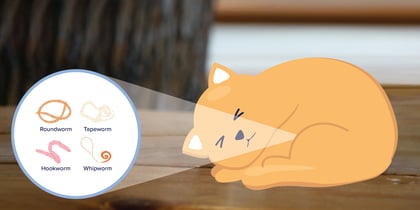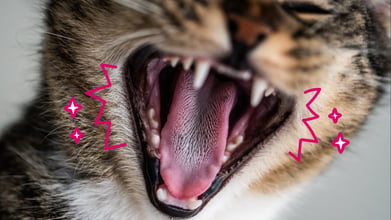Liver Disease In Cats: Causes, Symptoms, & Treatment

Table of Contents
Liver disease in cats is a rare yet critical condition that demands attention. As a vital organ with numerous functions, the liver plays a crucial role in your cat's well-being. Recognizing the signs of liver disease in cats is essential for early detection and appropriate treatment. By staying vigilant, you can ensure timely intervention and provide your cat with the care needed to combat this severe illness.
Key Takeaways:
- Liver disease in cats is a rare but critical condition that requires attention and early detection.
- Treatment of liver disease in cats focuses on stopping further damage and supporting the liver's healing process. It may involve surgery, medications, fluid therapy, and nutritional support.
- Early treatment and veterinary guidance are crucial for the recovery of cats with liver disease.
What is Liver Disease?
Liver disease is when the liver, an essential organ in the body, becomes sick. The liver has many important jobs, such as helping with digestion, storing nutrients, and removing toxins. When the liver gets diseased, it can make a cat very sick.
What Causes Liver Disease in Cats?
Liver disease in cats can be caused by various factors. It can be due to problems directly affecting the liver, called primary liver disease.
Some common causes of primary liver disease in cats include:
- Fatty liver disease (a build-up of fat in the liver)
- Toxins or poisons
- Bacterial or viral infections
- Liver cancer
- Parasites
- Triaditis (inflammation of the liver, pancreas, and intestines)
- Immune-mediated haemolytic anaemia
- Gallbladder stones or infection
- Congenital (present from birth)
Secondary liver disease in cats occurs due to another disease or condition affecting the body. These include diseases such as:
- Diabetes
- Pancreatitis
- Inflammatory bowel disease
- Cancer
- Hyperthyroidism
Determining a cat's specific cause of liver disease requires veterinary evaluation and diagnostic tests to provide appropriate treatment.
Signs & Symptoms of Liver Disease in Cats
Spotting the signs of liver disease in cats is crucial for early detection and timely intervention. Keep a close eye on your feline companion and watch out for these telltale indications. If you notice any of the following signs, it's essential to seek veterinary attention to ensure your cat's well-being.
- Yellowing of skin, gums, or eyes (jaundice): Cat's skin, gums, or eyes may turn yellow. Contact a vet immediately if you notice this.
- Vomiting: Cats with liver disease may vomit often.
- Lethargy: Cats with liver disease may seem unusually tired, lacking energy, and less active.
- Weight loss: Unexplained weight loss can indicate liver disease in cats.
- Bloated belly: Cats with liver disease may have a swollen or distended abdomen.
- Drooling: Excessive drooling can occur in cats with liver disease.
- Seizures: Cats experiencing seizures may have convulsive movements, muscle spasms, loss of consciousness, and uncontrolled shaking.
- Incoordination or Falling Over: Cats with liver disease may have difficulty coordinating movements, resulting in unsteady walking, stumbling, or falling over.
- Head Pressing: Cats may compulsively press their head against objects, which can indicate neurological dysfunction associated with liver disease.
- Blindness: Advanced liver disease can cause partial or complete loss of sight, with signs such as bumping into objects or difficulty navigating.
- Walking in Circles: Cats with liver disease may exhibit repetitive behavior of continuously walking in circles without purpose or wandering aimlessly in circular patterns.
How Is Feline Liver Disease Diagnosed?
To diagnose feline liver disease, your veterinarian will conduct a thorough health check and perform additional tests. These may include:
- Ultrasound: This detailed ultrasound allows for a close examination of the liver and enables the collection of liver cell samples. These samples help identify infections, cancer, or the presence of a fatty liver.
- X-rays: X-rays help evaluate the size and shape of the liver and can screen for gallbladder stones.
- Blood and urine tests: These tests are valuable in determining the underlying cause of your cat's disease. Urine and blood tests can uncover other issues like pancreatitis or kidney disease, which may complicate the diagnosis or treatment.
Although the diagnostic process may involve multiple tests, finding the exact cause of your cat's liver problems is vital for determining the most effective treatment.
Cat Liver Disease Treatment
Treating liver disease in cats focuses on stopping further damage and supporting the liver's healing process. The specific treatment depends on the underlying cause of the liver problems. Surgery may be necessary for some cases, while others may require specific medications.
Since cats with liver disease are often quite sick, your veterinarian may admit your cat to the hospital for treatment. The treatment typically involves fluid therapy and intravenous medications. Nutrition plays a crucial role in recovery, so your cat may receive nutrients and vitamins through a feeding tube to ensure they eat and get the necessary nourishment.
Cat Liver Disease Home Treatment
Treating liver disease in cats at home requires veterinary guidance, but you can provide supportive care. Here are some tips:
- Give Supplements: Consult your vet about long-term supplements like SAMe and silymarin (milk thistle extract) to protect and heal the liver.
- Follow a Special Diet: Feed your cat a vet-recommended diet formulated explicitly for liver disease. Carefully manage weight to prevent future issues.
- Prioritize Preventative Care: Stay current on vaccinations, flea control, and deworming to maintain overall health.
Always consult your vet for proper guidance and treatment of cat liver disease at home.
Conclusion
Liver disease in cats is severe, but they can recover if they get the proper treatment early on. If your cat has yellow skin, gums, or eyes or hasn’t eaten for 48 hours, this is an emergency, and a vet visit is needed. Your vet will need to do several tests to determine the cause of your cat’s liver problems and may recommend that your cat be hospitalized for treatment.
Talk to a veterinarian online with BetterVet if you have additional questions!
Frequently Asked Questions
How long can a cat live with liver disease?
Cats with liver disease can live for months to years, depending on the stage and management of the disease. Regular veterinary care, proper diet, and treatment can help improve quality of life and extend their lifespan.
When to put down a cat with liver disease?
The decision to euthanize a cat with liver disease should be made in consultation with a veterinarian. Factors such as the cat's overall health, quality of life, response to treatment, and severity of the liver disease should be considered.
What is the survival rate of cats with liver disease?
The survival rate of cats with liver disease depends on the underlying cause, stage of the disease, and effectiveness of treatment. Some cats with liver disease can respond well to treatment and have a good prognosis, while others may have a more guarded prognosis. It's important to work closely with a veterinarian to determine the best course of action.
What are the stages of liver disease in cats?
While liver disease in cats may not have universally recognized stages like some other medical conditions, it is still characterized by a progression of symptoms and severity. The progression and classification of liver disease in cats can vary depending on the underlying cause and individual factors.






